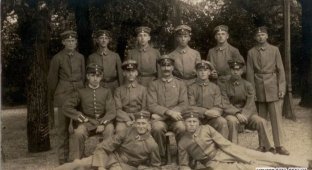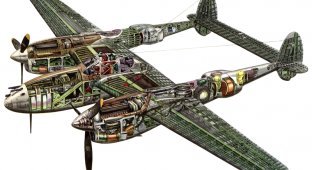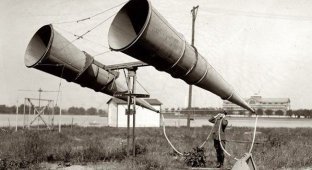The coming to power in Italy of the fascists led by Mussolini led to militarization of the economy. It was Italy that revealed to the world the theory of the general Due on the decisive role of aviation in the war. In 1931 this is a small state had the most powerful aviation in Europe - more than 800 aircraft. Power The Regia Aeronautica was demonstrated in Spain, where the Fiat CR.32 showed very high data. 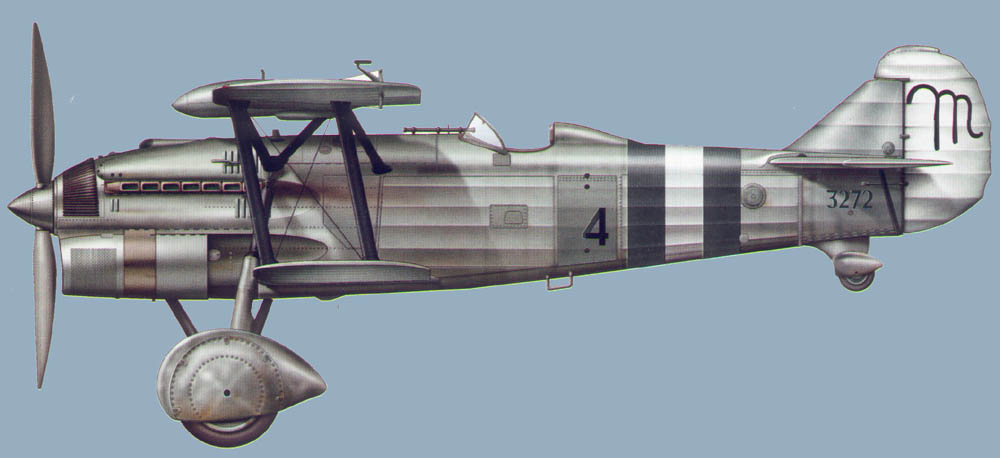
This biplane was replaced by the first serial Italian monoplane Fiat G.50, created as a result of the competition in 1936. 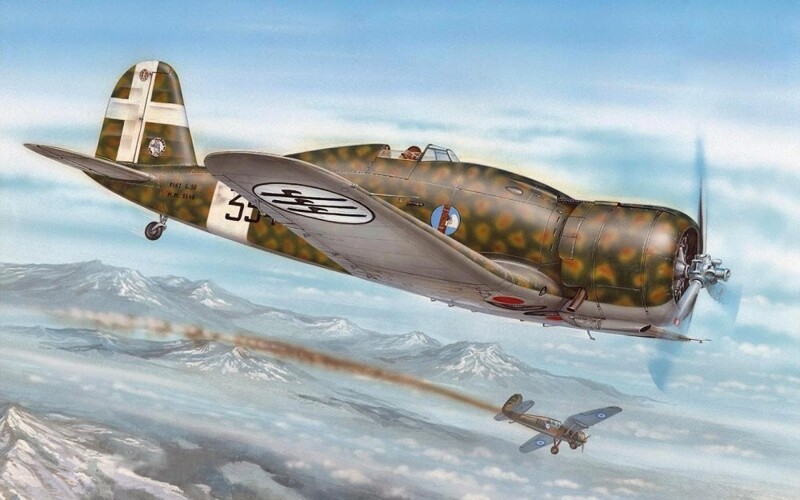
During it, unexpectedly strong competition for Fiat was made by the AerMacchi MC.200 aircraft.
AerMacchi has been leading its history since the First World War. At first, it produced licensed Nieuport fighters, and from 1916 began to produce flying boats of its own design and fighters.
October 23, 1934 racing seaplane designer Mario Castoldi MS.72 set a world speed record - 709.22 km/ h. 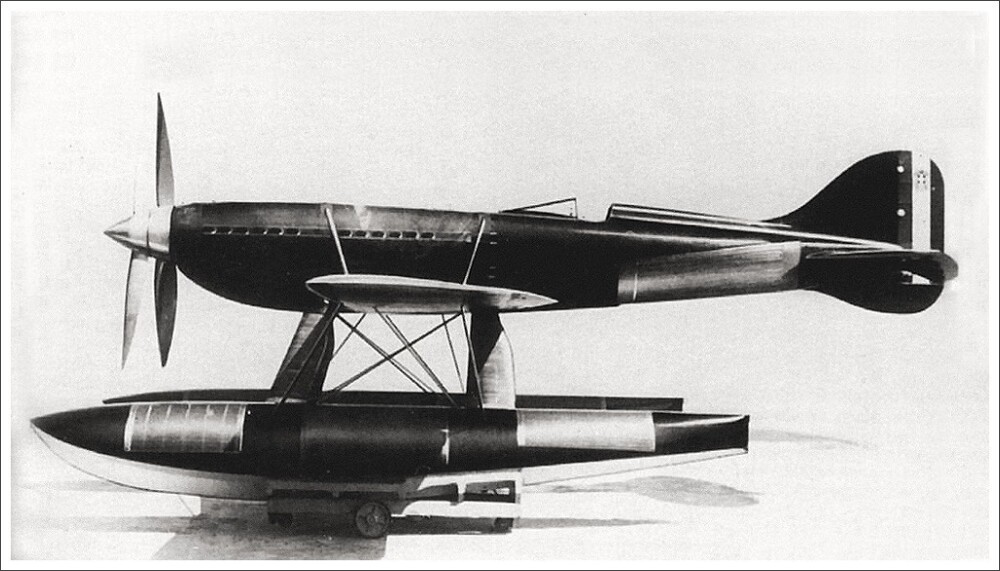
In the spring of 1935, relying on rich experience, he set about designing a monoplane fighter under the R program. The machine was supposed to get a closed cockpit, retractable landing gear, propeller-automatic. December 24 1937 test pilot Bruei took the prototype into the air. 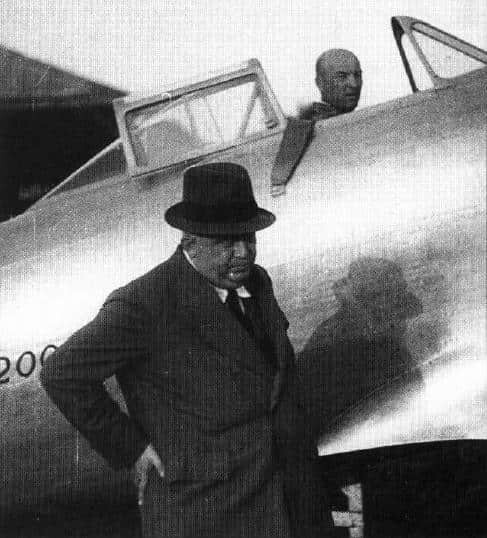
Castoldi and Bruei
True, the aircraft has undergone changes compared to original idea. So in view of the lack of a motor with a water cooling had to be supplied with a lobed Fiat A.74 with a power of 870 hp, worsening aerodynamics. The second feature that affected the aerodynamics - This is a cockpit raised to improve visibility. 
MS.200 showed high flight data. Initially he had fully enclosed teardrop lantern. But because of the conservatism of the pilots the designer was forced to make it half-open. Castoldi originally solved the problem of reactive moment compensation from the screw - he shortened the right half-plane by 190 mm.
MS.200 was put into service under its own name Saetta.
The armament of the new fighter consisted of two 12.7 mm SAFAT machine guns. 
MS.200 was produced from June 1939 to October 1942. A total of 1153 aircraft were produced.
The pilots liked the new fighter. High speed, rate of climb, maneuverability, survivability.
But Castoldi did not sit idly by, and proceeded to radical alteration of his successful offspring. The new project was developed under the in-line RA 1000RC 41-1 Monsone engine, which is a licensed a copy of the German DB-601A. In fact, on the glider of a successful “two hundred” put a powerful in-line motor. True, the fuselage was of a new shape and with a closed cockpit, the canopy of which leaned to the right, as on the 109th. 
Mario Castoldi
The MM445 prototype took to the air in 1940 under the control test pilot Carestiato. The increase in flight data was significant, therefore Mackey immediately received a contract for mass production MC.202 Folgore - Lightning - this is how the new fighter was named. 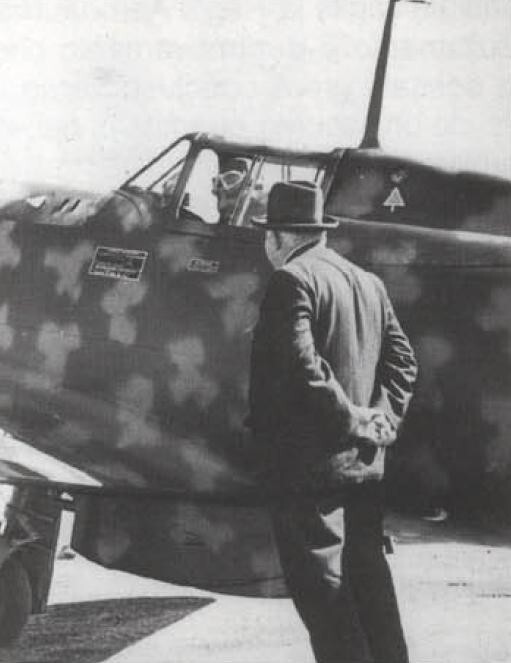
Mario Castoldi instructs Macchi Chief Pilot Guido Carestiato
The new aircraft had clean aerodynamic shapes, had balanced proportions. The surfaces were smooth and careful licking of all parts to reduce resistance.
The composition of onboard equipment was expanded. In particular, a radio compass was introduced.
The first production MS.202s were produced in May 1941.
I note that during the production of MS.202 it had no modifications. Only minor improvements were made. Starting from the 7th production series, a pair of SAFAT machine guns of 7.7 mm caliber began to be installed in the wings. Later, an armored head, an extended armored back, windshield armored glass. Part of the car received cameras and could drive tactical intelligence.
Since 1943, the Italian Air Force has tried to resist the raids American Fortresses and Liberators. But the power of weapons for such the task was not enough. In an attempt to increase the firepower under the wings tryoval to accommodate outboard MG-151/20, but this refinement worsened Fighter performance characteristics. This decision did not go into the series.
The first unit to receive Lightning in the autumn of 1941 was the 9th group, followed by the 17th and 8th.
September 30 of the same year, Lieutenant Friguiero opened an account Lightning wins by shooting down a Hurricane. On the same day, the deck Fulmar was shot down, and a group of 12 Lightnings, escorted by a seaplane, entered the battle with 7 Hurricanes and shot down two of them without loss on her part. 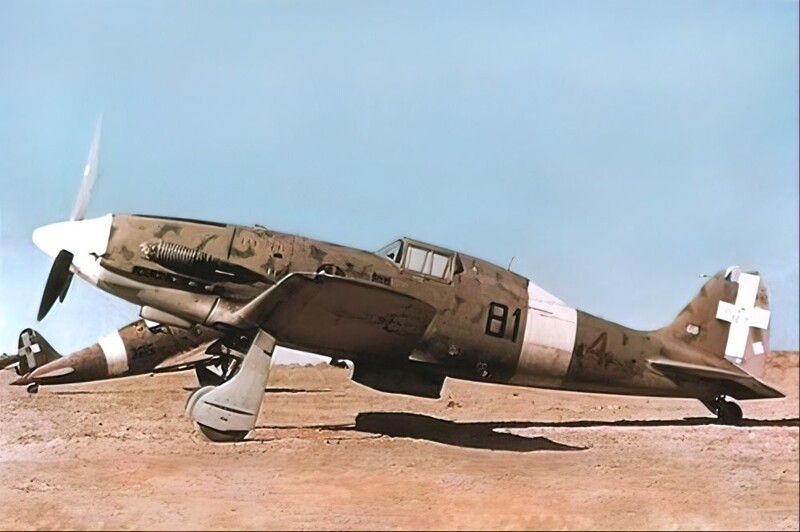
On December 18, 1941, the British launched Operation Crusader against the Italo-German troops in Libya. The next day the Lightnings clashed in air with Tomahawks. 
December was a difficult month for the Air Force on all sides.
For six months of fighting in North Africa, Lightning demonstrated its superiority over all modifications of the P-40 and Hurricane. Weakness the Italian fighter was armed. 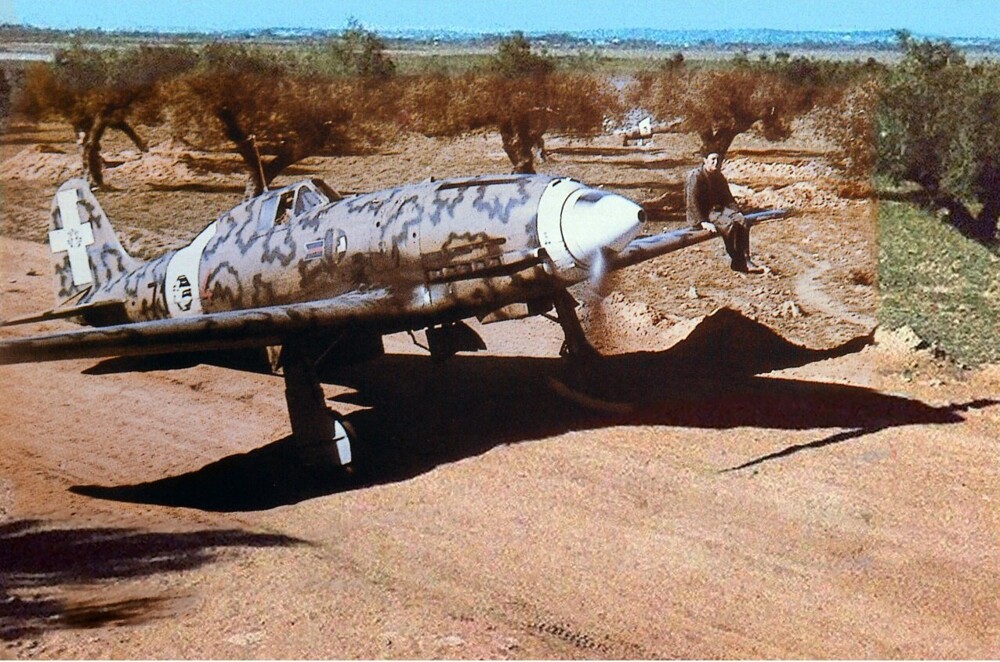
By the end of December, the Allies had gained air supremacy, using the latest R-51 and R-38 fighters, as well as Spitfire-9, which surpassed Lightning in all respects.
On May 13, 1943, the Italian Air Force withdraws from this theater of operations.
In addition to Africa, Lightning operated over Malta. 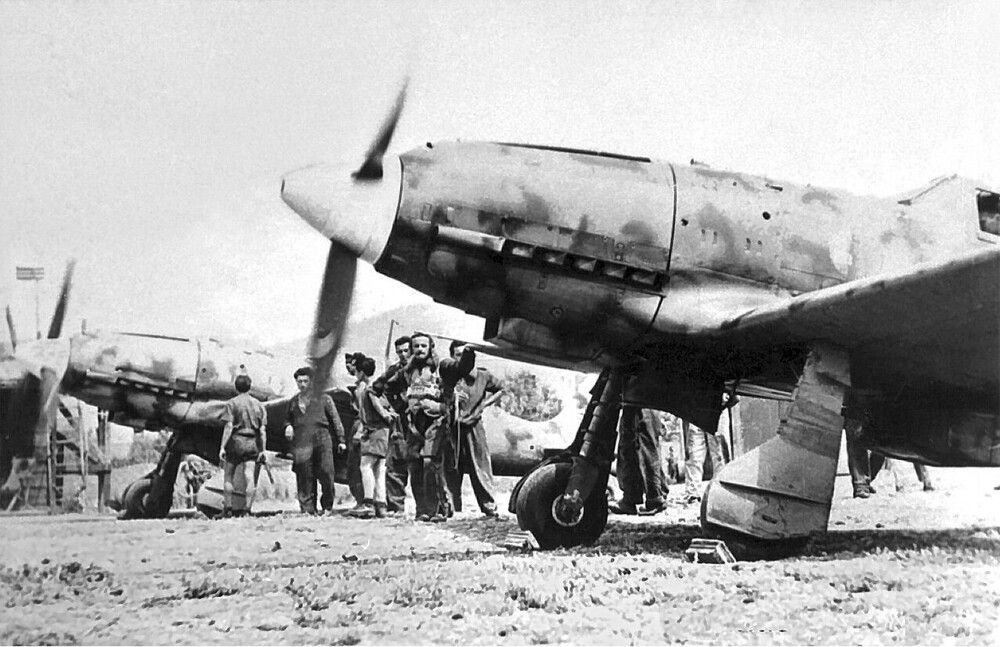
In the summer of 1941, Mussolini sent an expeditionary Corps - CSIR (Corpo di Spedizione Italiano in Russia). In its composition there was one 22nd fighter group, in addition to them, twin-engine Kaproni Sa.311 bombers, Kant Z.1007bis scouts and transporters. Major Bortsoni was in charge of aviation. August 27, 1941 they appeared in the sky of Krivoy Rog. In the future, the Italians acted in the south Ukraine and in the Rostov region. In March 1942 they were very successful carried out an attack on the Soviet airfield near Krasny Liman.
In April 1942, this group returned to Italy, and to replace she received the 21st, consisting of the 356th, 361st, 382nd and 386th squadrons.
MS.202 appeared on the Soviet-German front in September 1942.
This unit participated in the battles in Ukraine and near Stalingrad. In May 1943 the group returned to Italy.
For 18 months of fighting on the Soviet-German front, pilots Lightning announced the destruction in the air and on the ground of 88 Soviet aircraft with the loss of 19 of their own. 2557 sorties were flown interception, 1983 for escort, 1310 for strike operations, 511 for cover. True, most of the sorties were carried out on MS.200. On MS.202 carried out only 17. 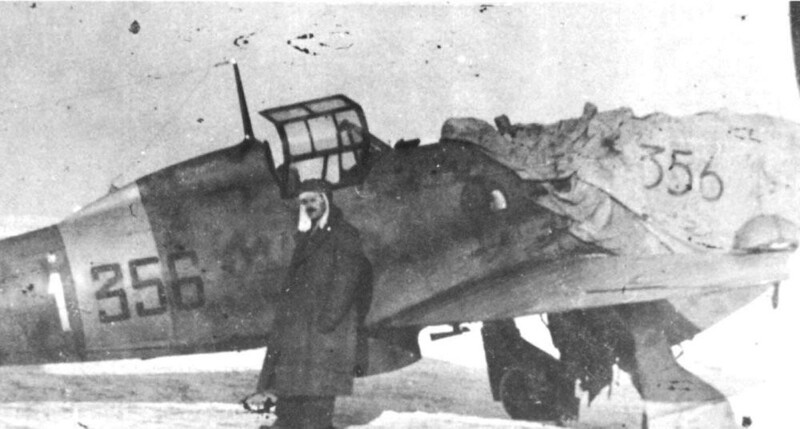
The leading ace of the Italians on the Soviet-German front was the commander of the 362nd squadron, Captain La Ferla, with 6 victories.
The most productive Italian ace of the Second World War, Franco Luccini, fought on the MS.202 fighter. 
September 8, 1943 Mussolini was removed from power. Italy briefly out of the war. During this period, 201 were in service. this type of fighter. King Victor Emmanuel III who came to power declared war on Nazi Germany. It should be noted that at that time there were two Italy. One controlled by the Allies, the other controlled by the Germans.
The Regia Aeronautica were converted to the Allied-controlled Raggruppamento Caccia.
Already on September 9, the former enemies of the Italians on their MC.202 covered the British convoy heading for Malta. Then there were operations in Yugoslavia, the battles for Monte Cassino, Albania.
During these battles, the MS.202 gradually gave way to the English Spitfire and the American Aero Cobra.
As for Italy, controlled by the Germans. There was the Italian Social Republic was created with its own air force - ANR (Aeronautica Nazionale Repubblicana). This structure included 24 MS.202. They did not take part in combat sorties, but served as educational machines. 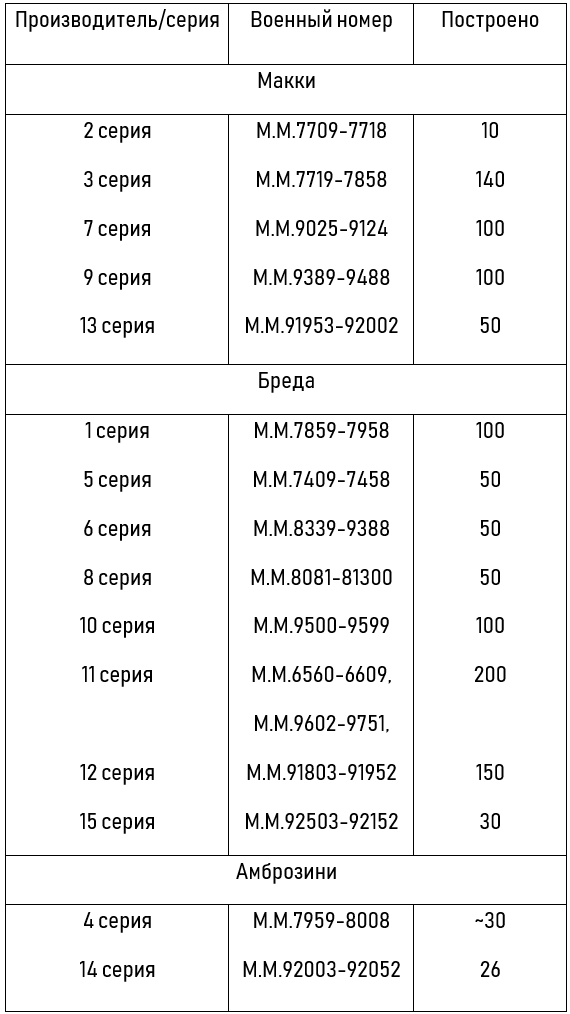
Armament
In 1886, the talented inventor Ernesto Breda 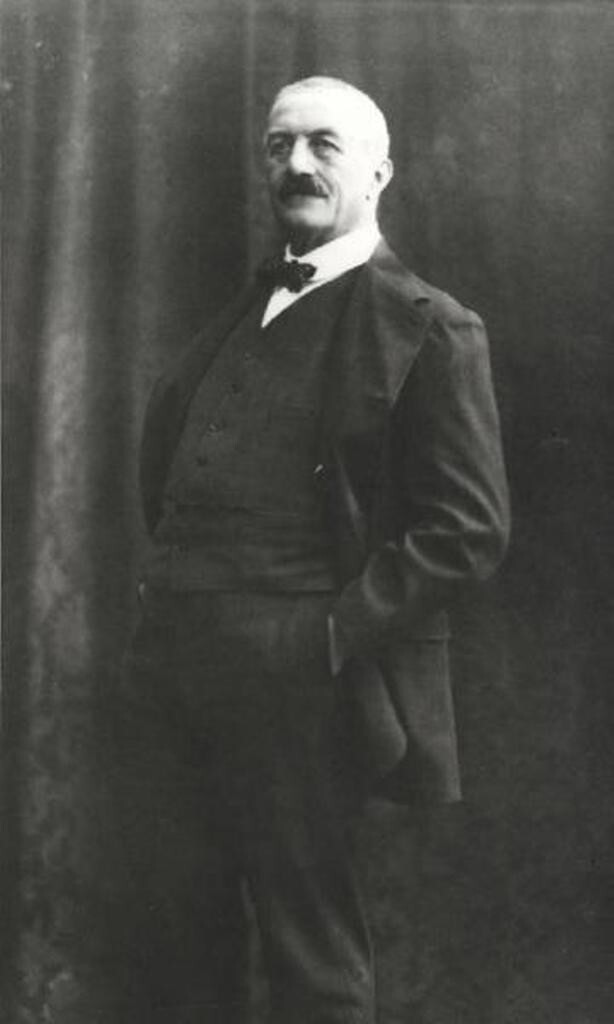
founded a company in Milan (Società Italiana Ernesto Breda) for the production of steam locomotives and railway equipment.
During the period of the Imperialist massacre in Brescia, a a subsidiary (Breda Meccanica Bresciana) that worked for the army. A to 30s. XX century, Breda's firm became largershim concern of Italy for production of military equipment and weapons.
In 1934, two large companies Fiat and Breda began negotiations on the creation of an arms concern. In 1936, a division of Fiat SAFAT (Società Anonima Fabbrica Armi Torino) was sold to Breda's firm. 
In the project of the Breda aircraft machine gun of 1935, the developers combined the principle of short barrel recoil of earlier designs machine gun of 1930 and improved the barrel locking mechanism, previously developed by SAFAT plant engineer Giuseppe Mascarucci, in in which the barrel and bolt remained engaged at the start of the barrel's recoil stroke by turning it, which also made it possible to reduce the dimensions of the recoil unit trunk. In addition, a muzzle booster was added to the design, which allowed to achieve a high rate of fire.
The new machine gun was designed for four cartridges: 7.7 × 56R Breda - licensed version of 0.303 British Mk.VII, 8×59RB Breda, 12.7x81SR Breda - licensed British .5" Vickers V565 SR and French 13.2x99 mm Gokchiss. 
Breda Safat 12.7
Mussolini, the head of Italy, personally ordered the start of production machine guns in two versions: 7.7 mm and 12.7 mm, without even waiting trials! 
As for performance, the Breda-SAFAT 12.7 mm was inferior to both the American 0.50 Browning and the Soviet UB. 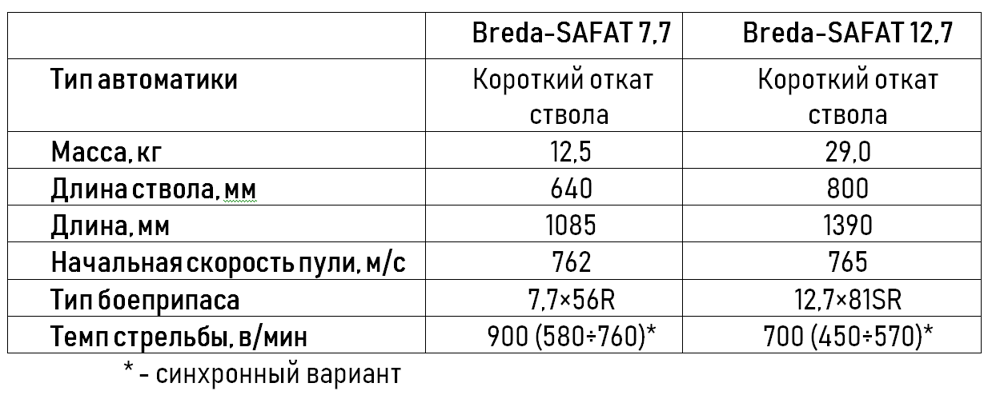
The production of a 7.7 mm machine gun started in 1935, and large-caliber version went into production in 1937. Production ceased in 1940
Breda-SAFAT machine guns were installed on almost all types combat aircraft produced in Italy. A pair of synchronized machine guns usually constituted the armament of the Italian fighters of the early types, such as the Fiat CR-32 and 42, put 7.7 mm versions, on more modern Macchi MC-200 and 202, as well as Fiat G.50 and Regiana Re.2000 already installed 12.7 mm Breda. 
If for the 30s such weapons were not too powerful, but at least quite adequate, then already with the beginning of the Second The World War became frankly weak. Although the nomenclature of ammunition was quite wide: armor-piercing bullet, tracer, armor-piercing incendiary tracer, armor-piercing incendiary, discontinuous (similar to the Soviet MDZ). 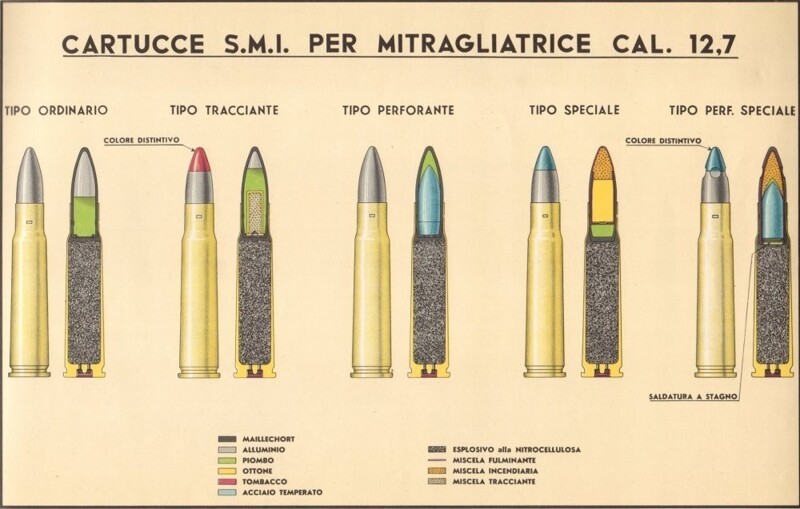
Here is such a fighter of Italy 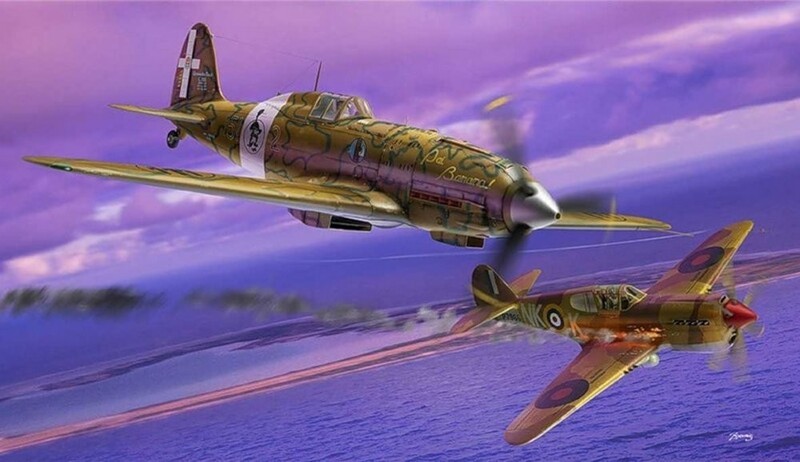
Add your comment
You might be interested in:












